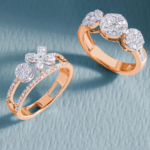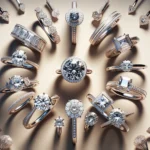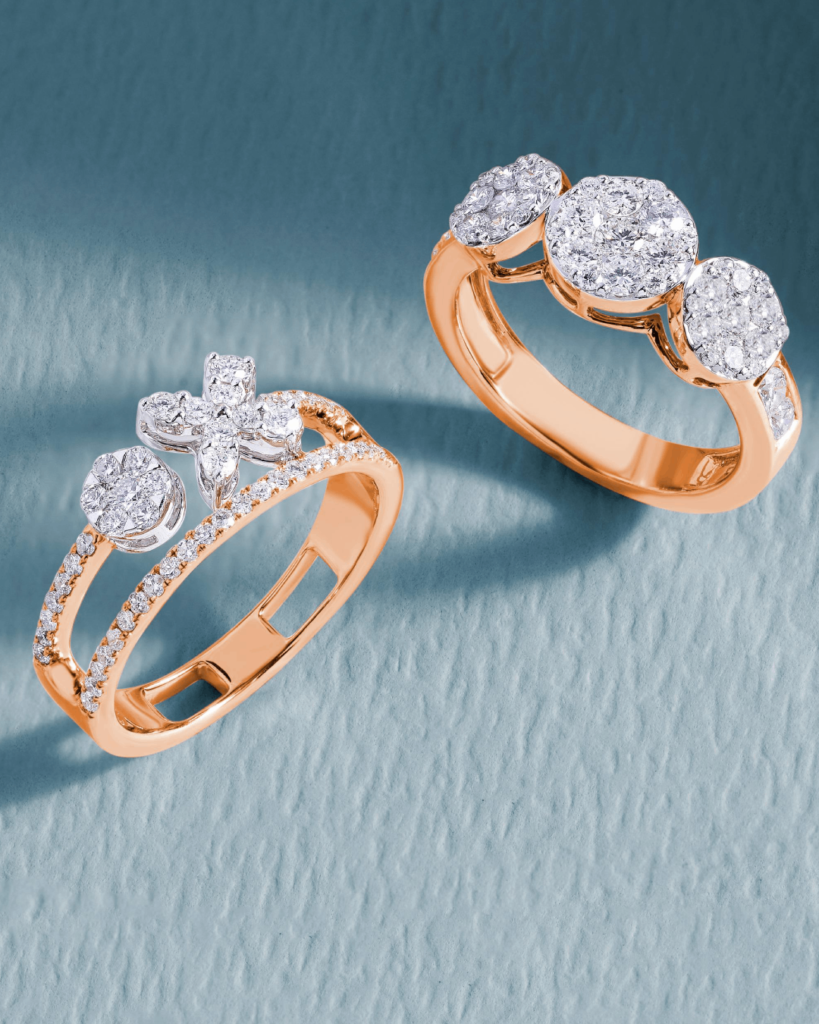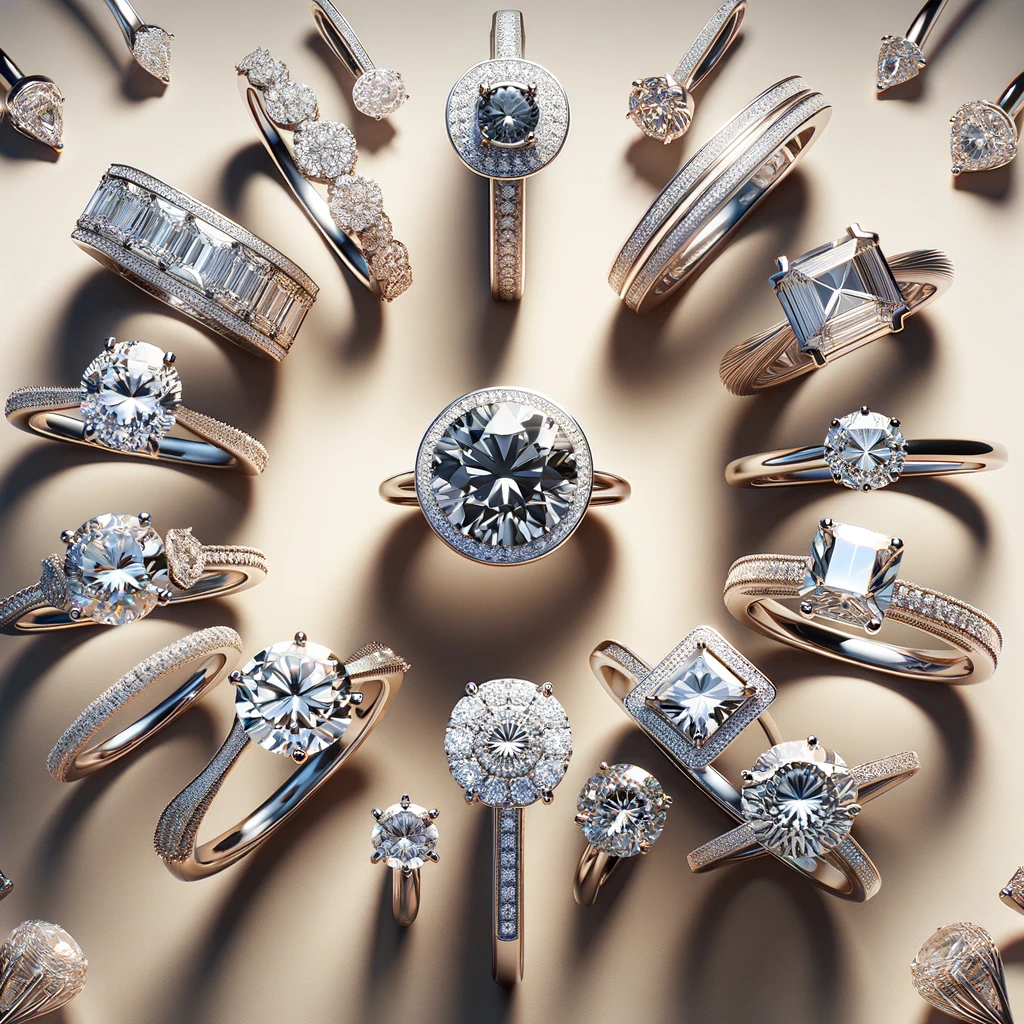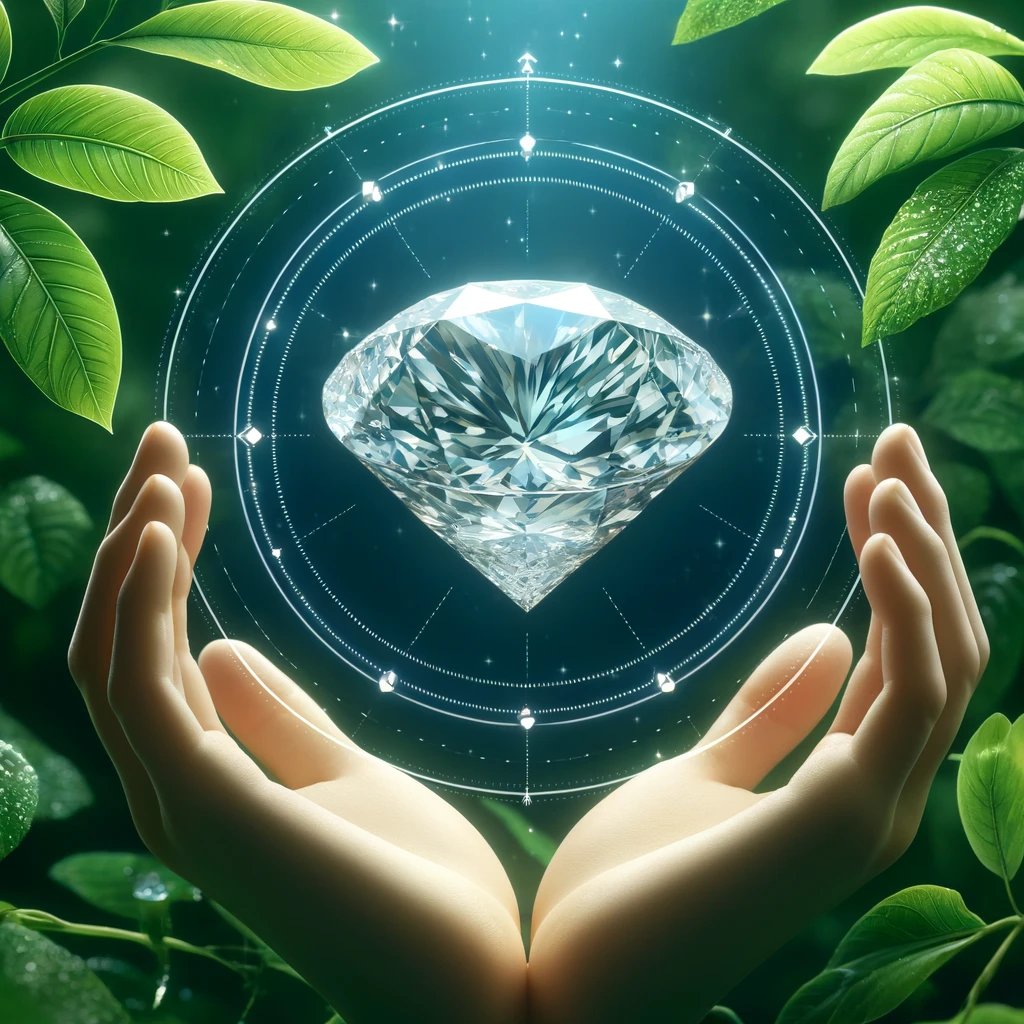Why Understanding the Four Cs Is Essential for Choosing the Perfect Diamond Ring
The Four Cs—Cut, Color, Clarity, and Carat—form the core criteria for evaluating diamond quality. Understanding these elements will guide you in making an informed decision when choosing the perfect diamond ring.
Cut determines how brilliantly the diamond sparkles, making it the most critical factor for overall beauty. It impacts both the diamond’s brilliance and light reflection, so a well-cut diamond is essential for maximum sparkle.
Color affects the diamond’s appearance. While colorless stones are the most sought-after for their purity and brilliance, diamonds graded further down the scale can still offer great value.
Clarity ensures the diamond is free from visible flaws, enhancing its transparency and value. The fewer inclusions or blemishes a diamond has, the higher its clarity grade.
Carat reflects the diamond’s weight and size. This factor plays a significant role in balancing personal preference with budget.
By understanding the Four Cs, you can confidently select a diamond that matches your style, reflects your love story, and fits your budget, ensuring it becomes the perfect symbol of your commitment.
Let’s break down the Four Cs in detail:
1. Cut: The Most Important Factor
🔹 What is Diamond Cut?
The cut refers to how well a diamond has been shaped and faceted. This process affects the diamond’s brilliance, sparkle, and light reflection (fire and scintillation).
🔹 Grading Scale:
- Ideal/Excellent Cut: Maximum sparkle
- Very Good Cut: Great brilliance, but slightly less than ideal
- Good Cut: Decent sparkle, often better value for money
- Fair/Poor Cut: Dull, does not reflect light well

🔹 Why Cut Matters the Most:
Interestingly, a smaller, well-cut diamond can appear larger than a poorly cut diamond of the same carat weight. For example, a 1-carat excellent cut diamond may seem more brilliant than a 1.2-carat poor cut diamond.
🔹 Best Cuts for Maximum Sparkle:
- Round Brilliant Cut: Known for its sparkle
- Princess Cut: Modern and brilliant
- Cushion Cut: Vintage with great fire

2. Color: How White is Your Diamond?
🔹 What is Diamond Color?
Diamonds are graded from D to Z, with D representing colorless (and the most valuable) and Z showing noticeable yellow or brown tint.
🔹 Color Grading Scale:
- D-F (Colorless): Best quality, highest price
- G-J (Near Colorless): Slight tint, excellent value
- K-M (Faint Tint): Visible yellowish tint
- N-Z (Noticeable Tint): Not recommended for engagement rings
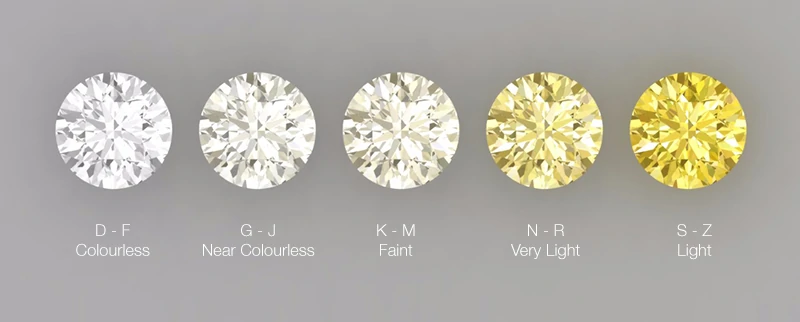
🔹 Best Color Choices for Engagement Rings:
If you want the best quality, choose D-F. However, G-H provides a great balance of quality and price (appearing colorless to the naked eye). I-J is another option for those on a budget.
🔹 Pro Tip:
Certain settings can enhance a lower-color diamond’s appearance. Using yellow or rose gold can make a lower-color diamond look whiter, offering beauty while saving money.

3. Clarity: How Flawless is Your Diamond?
🔹 What is Diamond Clarity?
Clarity measures the presence of natural inclusions (internal flaws) and blemishes (surface flaws). Fortunately, most inclusions are microscopic and won’t affect the diamond’s overall beauty.
🔹 Clarity Grading Scale:
- FL (Flawless): Extremely rare and expensive
- IF (Internally Flawless): No internal inclusions, very rare
- VVS1/VVS2 (Very Very Slightly Included): Nearly perfect, hard to spot flaws
- VS1/VS2 (Very Slightly Included): Great clarity, flaws visible only under magnification
- SI1/SI2 (Slightly Included): Small inclusions, may be visible to the naked eye
- I1/I2/I3 (Included): Visible flaws, not recommended for fine jewelry
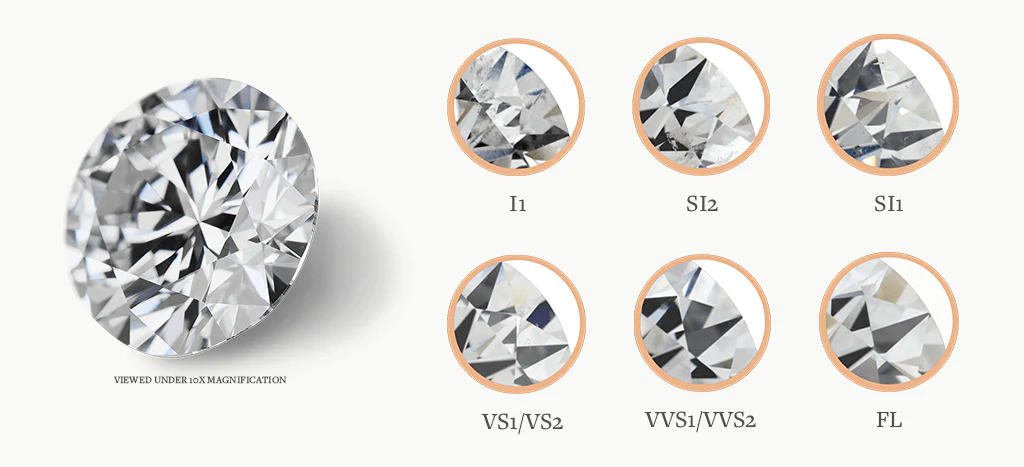
🔹 Best Clarity for Most Buyers:
VS2-SI1 diamonds offer the best balance of price and clarity. Many SI1 diamonds appear “eye-clean,” meaning the flaws are invisible to the naked eye.
🔹 Pro Tip:
Step-cut diamonds (like Emerald or Asscher) show inclusions more easily, so opting for a VS1 or better is wise. Brilliant-cut diamonds (like Round or Princess) hide inclusions well, making SI1 a great value choice.

4. Carat: How Big Should Your Diamond Be?
🔹 What is Carat Weight?
Carat refers to the diamond’s weight (not necessarily its size). For context, 1 carat = 0.2 grams (about the weight of a paperclip).
🔹 Carat Weight vs. Size:
Different cuts distribute weight differently. For instance, a 1-carat round diamond looks different from a 1-carat emerald-cut diamond due to varying weight distributions.
🔹 Popular Carat Sizes:
- 0.50–0.75 carat: Budget-friendly yet elegant
- 1.0 carat: Classic and popular
- 1.5–2.0 carats: Luxurious choice
- 3.0+ carats: Statement piece, very expensive

🔹 Pro Tip:
“Magic weights” like 1.0, 1.5, and 2.0 carats often come with significant price jumps. Buying just under these weights (e.g., 0.98 instead of 1.0 carat) can save you money without sacrificing much in visible size.

How to Balance the Four Cs for the Best Value?
💎 If you want maximum sparkle: Prioritize Cut above all else.
💎 If you want size without exceeding your budget: Lower Color and Clarity but maintain a high Cut.
💎 If you’re seeking an eye-clean diamond on a budget: Choose SI1 clarity, G-H color, and an excellent cut.
💎 If you’re aiming for a premium ring: Focus on D-F Color, VS1+ Clarity, and Excellent Cut.
